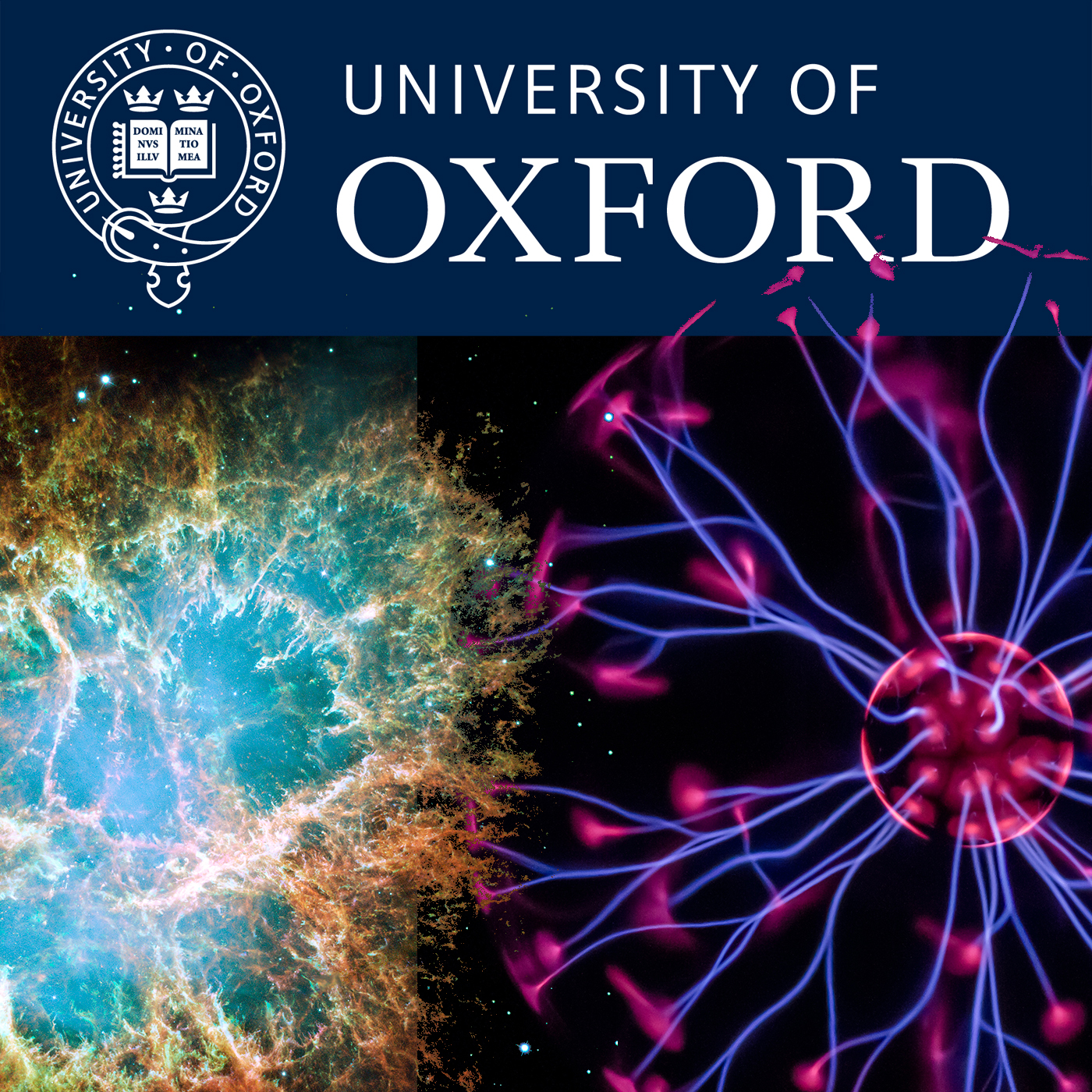

Theoretical Physics - From Outer Space to Plasma
Oxford University
Learn about quantum mechanics, black holes, dark matter, plasma, particle accelerators, the Large Hadron Collider and other key Theoretical Physics topics. The Rudolf Peierls Centre for Theoretical Physics holds morning sessions consisting of three talks, pitched to explain an area of our research to an audience familiar with physics at about second-year undergraduate level.
Episodes
Mentioned books

Jul 6, 2018 • 55min
The ultimate limits of privacy and randomness...for the paranoid ones
This talk explains how qubits are used to represent numbers in a way that permits 'quantum-mechanical parallel' computing. We show how this can used to achieve fast factorisation of large numbers, and hence the breaking of current codes. We end by explaining how entangled pairs of particles can be used to provide an alternative and entirely secure cryptographic system.

Jul 6, 2018 • 47min
“Open” Quantum Systems
This talk reviews how to deal with quantum systems that are coupled to the outside world, as in reality all systems are. We first introduce density operators and explain how quantum states give rise to them. We then turn to measures of entanglement that can be computed from a density operator, and show that entanglement grows with time. Finally, we show how the interaction with the environment gives rise to the phenomenon of decoherence.

Jul 6, 2018 • 40min
Quantum Systems from Group up
This talk reviews the modern formulation of the basic ideas of quantum mechanics. We start by explaining what quantum amplitudes are, how they lead to the idea of a quantum state and how these states evolve in time. We then discuss what happens when a measurement is made before describing correlated ('entangled') systems. Applying these ideas to two-state systems ('qubits') we point out that the complexity of computing the evolution of an N qubit system grows like exp(N)

Jan 25, 2018 • 39min
Galaxy Dynamics: The chemical evolution side
Dr Ralph Schoenrich will talk about the chemical evolution side Spiral density waves patterns re-distribute stars throughout the entire system, making it impossible to know a star's origin from just its kinematics. However, stars are more than just points in phase space: every star is labelled with the elemental abundances of the gas cloud from which it was formed. Over the last few years a number of observational campaigns have started to measure these labels for millions of stars in our own Galaxy's disc. Ralph Schoenrich will describe how chemodynamical models are being used to piece together the evolution of our Galactic environment from presolar times to the present.

Jan 25, 2018 • 44min
Galaxy Dynamics: The dynamics of galaxy discs
Dr John Magorrian will talk about the dynamics of galaxy discs In galaxy discs it is energetically favourable for angular momentum to move outwards and mass to move inwards. This transportation is effected by spiral arms, but what causes them? Simple linear response calculations demonstrate that even the smallest perturbation is amplified manyfold, while the differential rotation of the disc means that the response is stretched out into a spiral-like pattern. John Magorrian will introduce the notion of the disc as a resonant cavity, within which spiral density perturbations rattle back and forth.

Jan 25, 2018 • 51min
Galaxy Dynamics: Stellar systems: a new state of matter
Prof James Binney FRS will talk about stellar systems: a new state of matter The long range of gravity means that many concepts from undergraduate statistical mechanics do not apply: energy is not extensive; there is no microcanonical or canonical ensemble. Stars and dark matter particles have long mean free paths, which means that to a very good approximation their motion is determined by the mean-field gravitational potential. James Binney will identify a hierarchy of timescales, explaining how the Boltzmann equation for the full 6N-dimensional many-particle phase space distribution function can be reduced to an evolutionary equation of a function of a mere 3 variables that is governed by the resonances among the particles' orbital frequencies.

Nov 3, 2017 • 43min
Superfluids in Flatland: Topology, Defects, and the 2016 Nobel Prize
In this talk, Siddharth Parameswaran discusses how a topological approach to 2D systems reveal that they can indeed become superfluid, and lead to surprising and beautiful universal results whose implications continue to resonate today. Superfluids spontaneously break a continuous symmetry linked to the conservation of particle number in a many-body system. Standard lore holds that such symmetries must remain unbroken at any temperature above absolute zero in a two-dimensional material, such as a thin sheet or film, apparently precluding superfluidity in such systems.

Nov 3, 2017 • 36min
Quantum mechanics on the human scale
Stephen Blundell reviews a theory of superconductivity that was developed in Oxford in the 1930’s by Fritz London. The idea is that under certain conditions quantum coherent effects can become manifest on a large scale. In an effect such as superconductivity, this idea can be put to use in such applications as magnetic resonance imaging, in which a living human patient is inserted inside a quantum coherent wave function. He will explain how coherent effects can be measured in real superconductors.

Nov 3, 2017 • 46min
From Identical Particles to Frictionless Flow
John Chalker discusses how the laws of quantum mechanics lead us from the microscopic world to macroscopic phenomena. The notion that atoms of a given isotope are indistinguishable has profound consequences in the quantum world. For liquids made of identical bosons, indistinguishability forces the particles into a quantum condensate at low temperature, where they all dance in perfect synchrony. Treated gently, such a condensate has no viscosity: once it is set in motion --say around a circular pipe -- flow will persist indefinitely (so long as the fluid is kept sufficiently cold!).

May 10, 2017 • 47min
Exploring the very early universe with gravitational waves
John March-Russell gives a talk about gravitational wave signals of stringy physics, a ‘soundscape’ connected to the landscape of string vacua.


